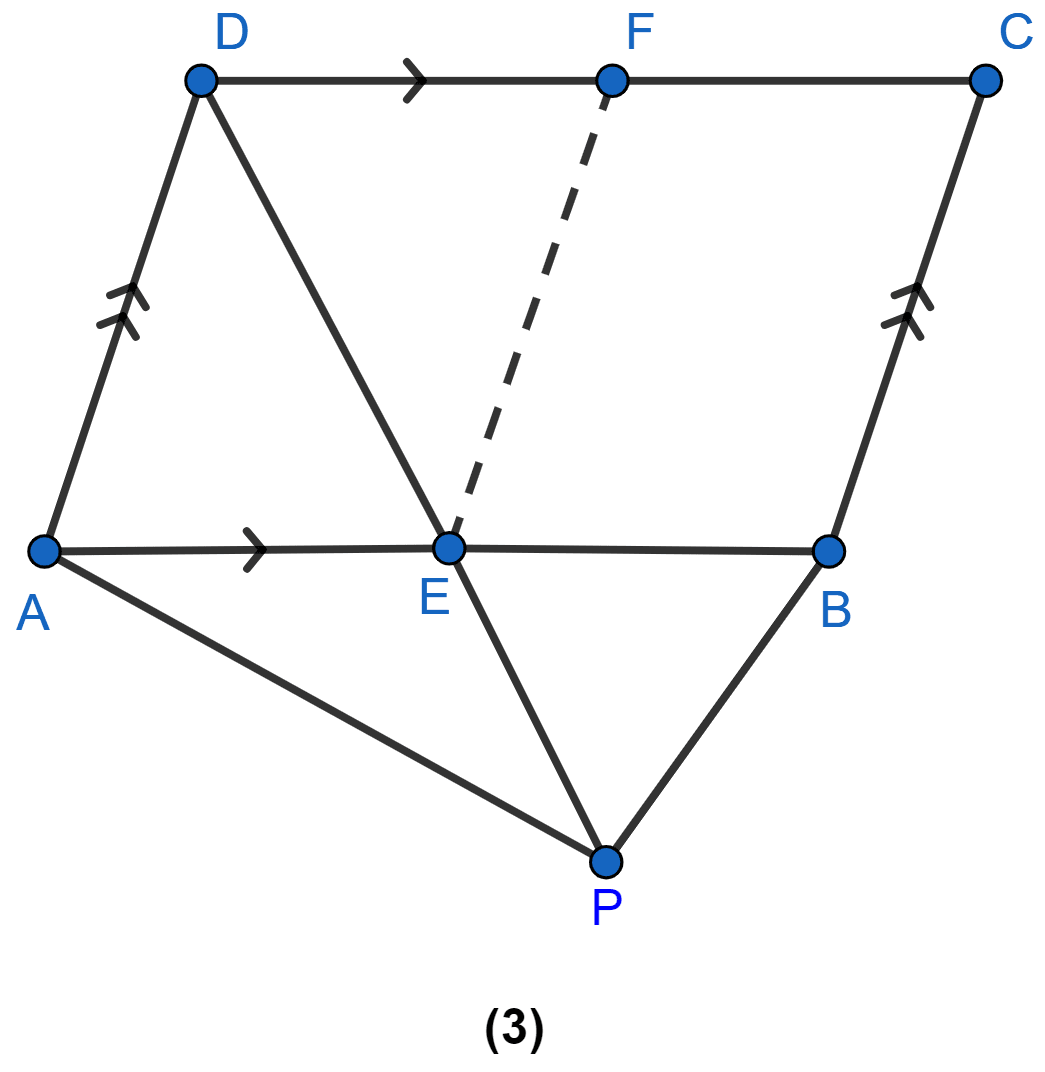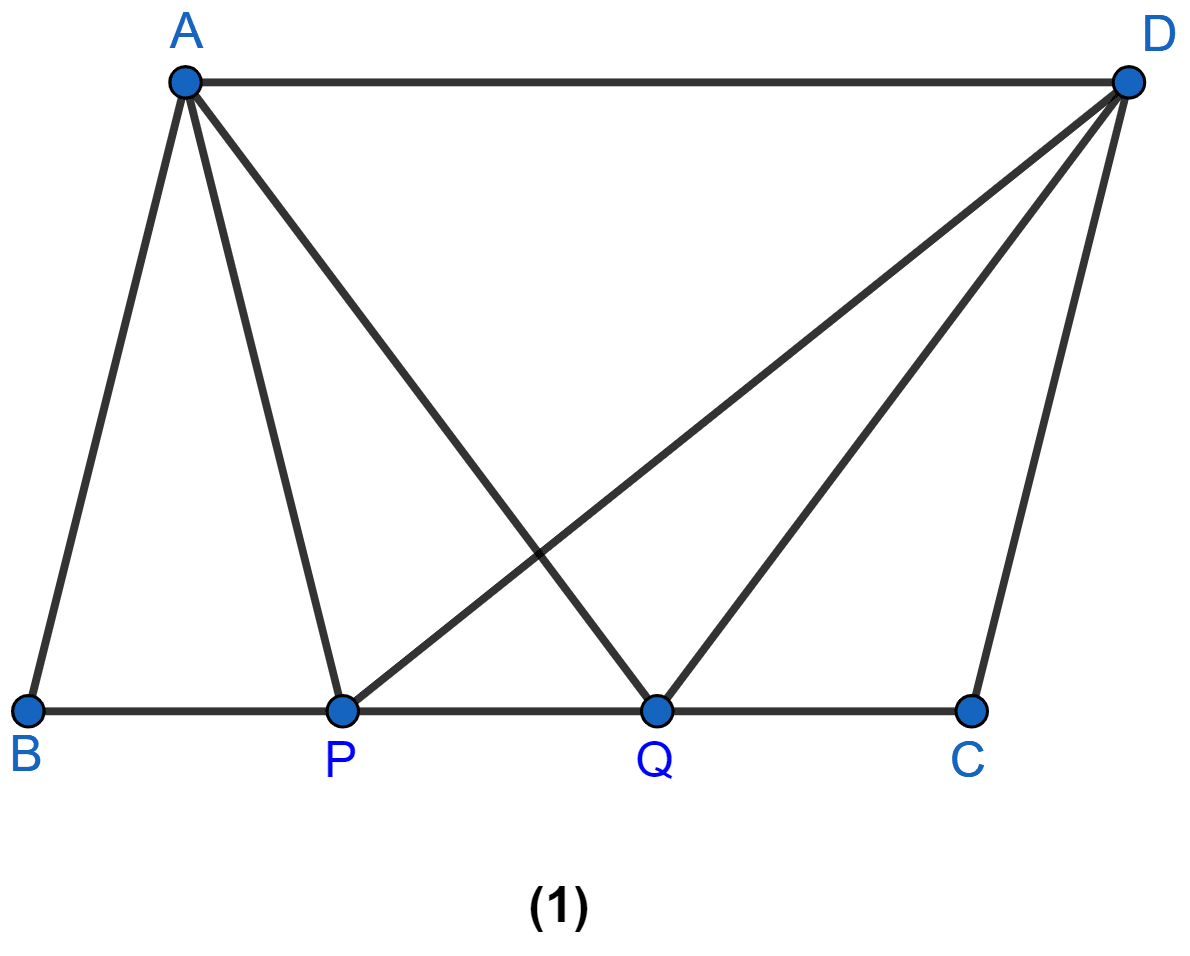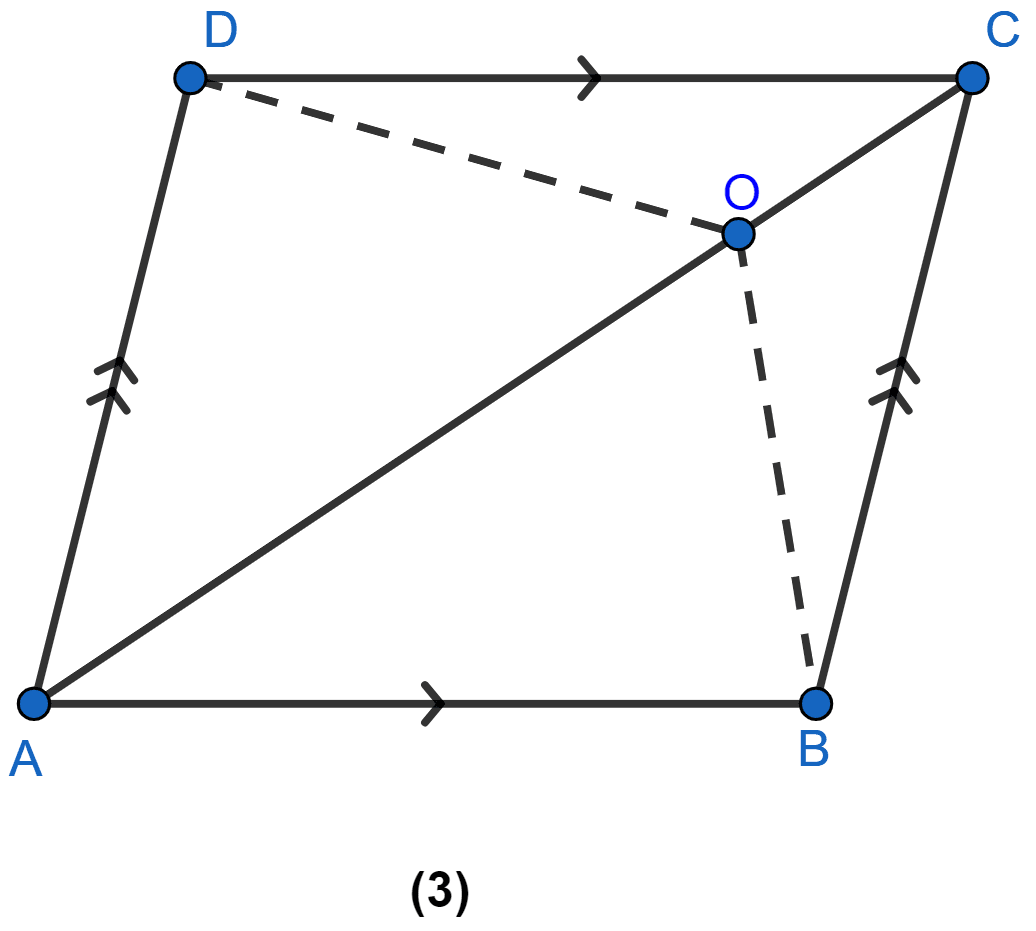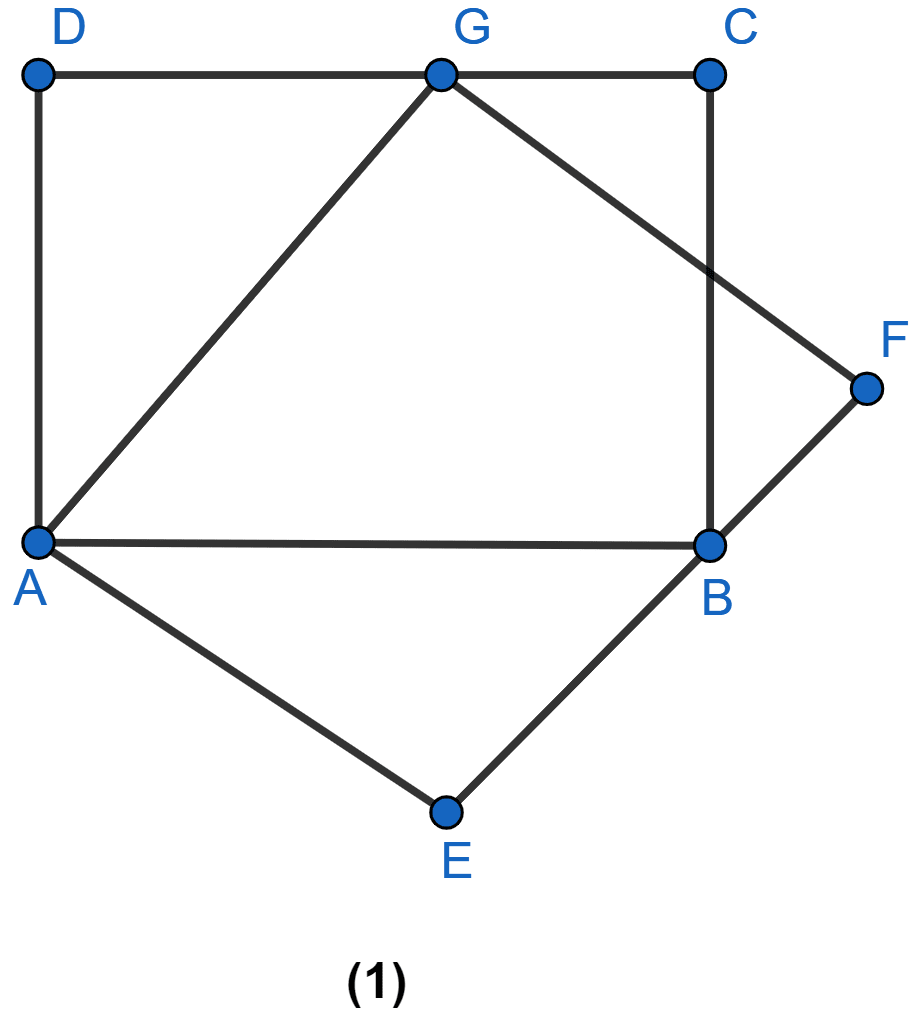Mathematics
In figure (2) given below, DE is drawn parallel to the diagonal AC of the quadrilateral ABCD to meet BC produced at point E. Prove that area of quad. ABCD = area of ∆ABE.

Theorems on Area
21 Likes
Answer
We know that, ∆ACE and ∆ADC are on the same base AC and between the same parallel lines AC and DE.
Area of ∆ACE = Area of ∆ADC
Now, adding ar (∆ABC) on both sides, we get
⇒ Area of ∆ACE + Area of ∆ABC = Area of ∆ADC + Area of ∆ABC
⇒ Area of ∆ABE = Area of quad. ABCD
Hence, proved that area of quad. ABCD = area of ∆ABE.
Answered By
14 Likes
Related Questions
In figure (3) given below, E and F are midpoints of sides AB and CD, respectively, of parallelogram ABCD. If the area of parallelogram ABCD is 36 cm2,
(i) state the area of ∆APD.
(ii) Name the parallelogram whose area is equal to the area of ∆APD.

In figure (1) given below, ABCD is a parallelogram. Points P and Q on BC trisect BC into three equal parts. Prove that :
area of ∆APQ = area of ∆DPQ = (area of ||gm ABCD)

In the figure (3) given below, ABCD is a parallelogram. O is any point on the diagonal AC of the parallelogram. Show that the area of ∆AOB is equal to the area of ∆AOD.

In the figure (1) given, ABCD and AEFG are two parallelograms. Prove that area of || gm ABCD = area of || gm AEFG.
